Did I mention that we’re going to Oslo? It’s a trip that started with “hey, we should spend Thanksgiving in Iceland with my parents!” that evolved, once Iceland’s 4-week service dog quarantine became evident, into an alterative Nordic adventure. So my parents booked YYZ-PHL-MAN-OSL and we booked YHZ-YOW-LHR-OSL.
And it’s LHR where I type to you today, as our afternoon layover draws to a close.
Best decision we made was to get a day room here at the Thistle Hotel near Terminal 5. It was only 45 pounds ($90 CDN at today’s rate) for 8 hours, and although it’s a tiny, plain room, it has a bed and a shower and free, fast wifi. It’s also strikingly close to Terminal 5, from which we depart in a few hours.
Plan A for this afternoon was that [[Catherine]] would nap and relax here in the hotel while Oliver and I repeated our 2010 movie-going adventure, with plans to go to the same Cineworld Feltham to see The Martian.
This plan got scuttled when a series of three cab drivers either flat-out refused to take Ethan in their cabs, or wanted an extortionate price – $60 each way – to take us the 20 minutes to the cinema.
So we fell back on Plan B, which was to wander around the neighbourhood.
You would think that the area around a Heathrow Airport hotel would be a stark wasteland of concrete. And there is certainly some of that. But, it turns out, there’s also lots that’s more interesting.
In a wander of a few hours around the hotel we encountered a bridge constructed in 1834 bearing the crest of King William IV, the Heathrow Special Needs Farm (filled with all manner of horses, sheep, goats, and donkeys), Waterside (the world headquarters of British Airways), relaxed in the sun at the Peggy Bedford Biodiversity Site, and had lunch at The White Horse Pub. At the pub we learned that at a British pub there is no table service (after waiting for table service for 15 minutes I Googled “how to order at a British pub” and helpfully found a guide that sent me to the bar to order).
Now we’re off to Oslo.
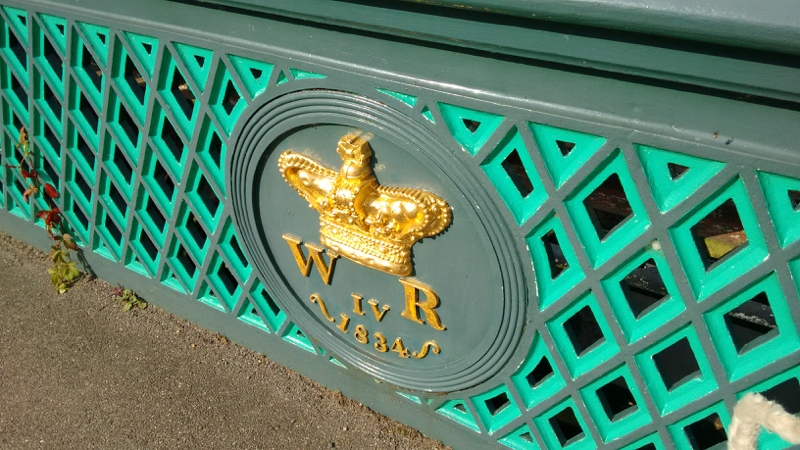
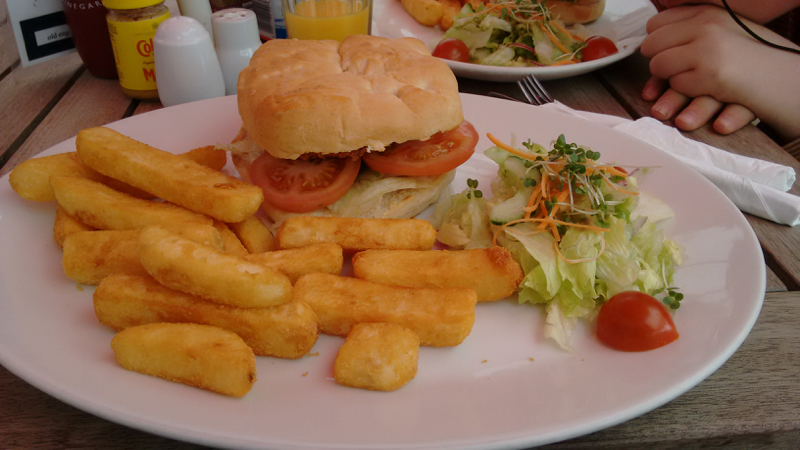
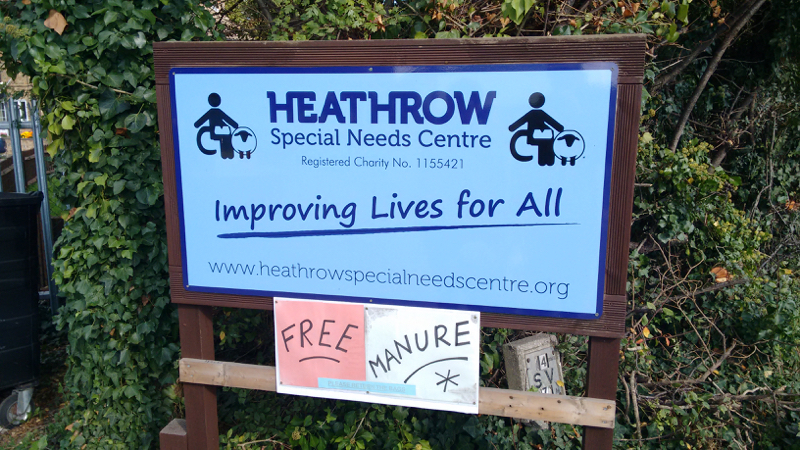

The annual Quilt Show is happening inside St. Paul’s Anglican Church in downtown Charlottetown. [[Catherine]] is one of the organizers, and our 2000 VW Jetta is the platform for the “car quilt” that’s out on the lawn (the presence of our car there prompted City Police to phone me last night, concerned that I know that my car was on the lawn of the church).
The artistry and technique of the quilts, rugs, hangings and other fiber pieces in the show is stellar; it’s the best $5 you’ll spend this week. And you get to see the inside of St. Paul’s too.
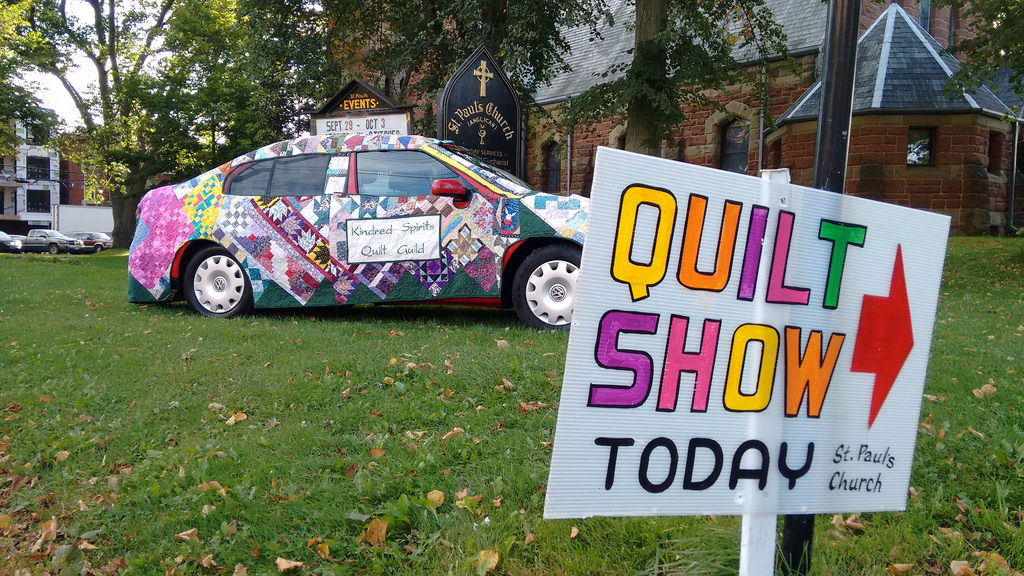
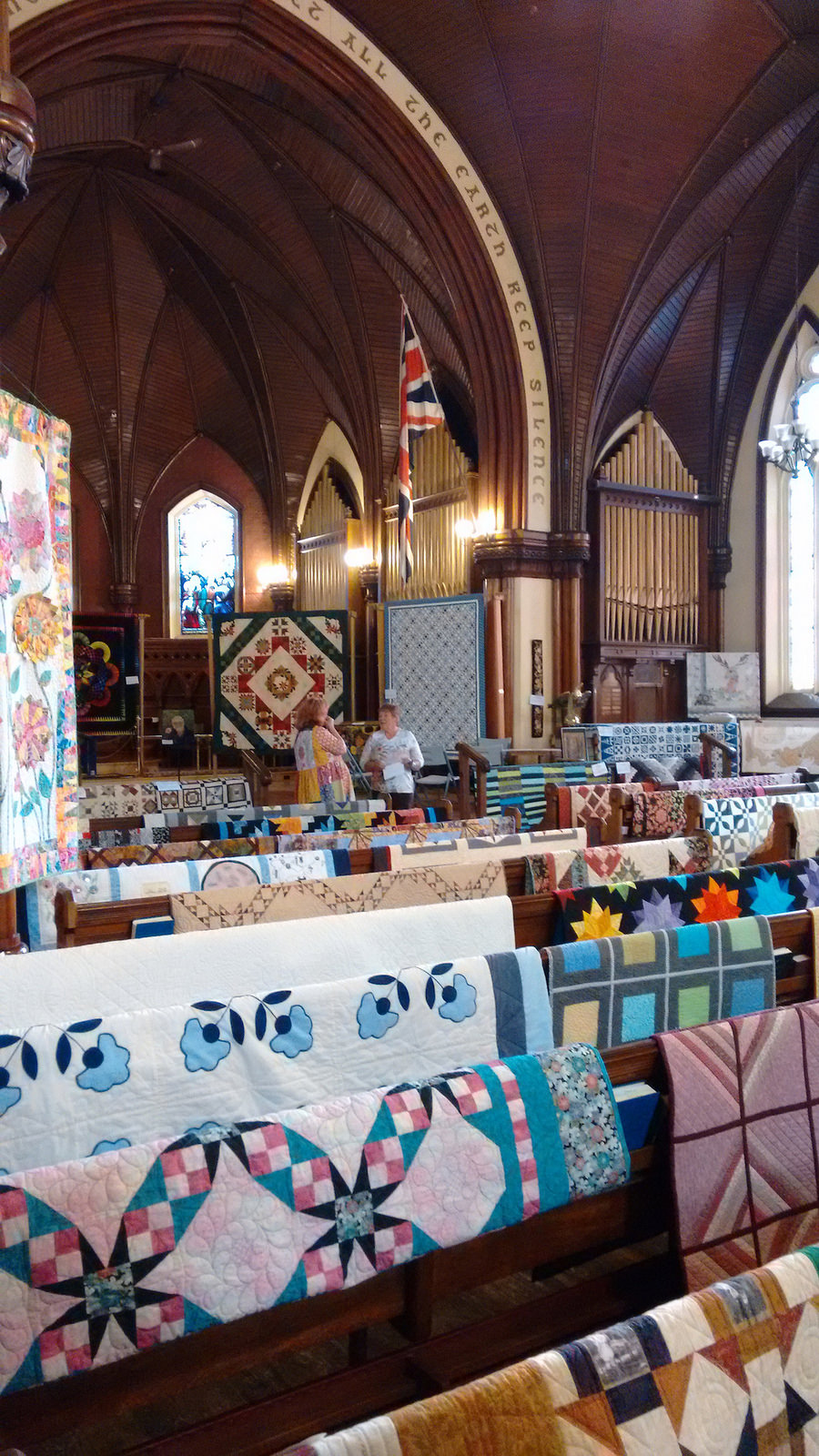
It has been the year of talking about open data.
It all started back in February when I was invited to present to a meeting of ARMA Prince Edward Island, a comity of public servants working in “recorded information management.” This was a “hands-on” workshop (blog | slides), and I used my work with electricity data as the jumping off point for a tour of open data technical concepts from a records management perspective.
Attending that session was Mike Fagan, Queen’s Printer for Prince Edward Island, and subsequently Mike invited me to speak to the Queen’s Printers Association of Canada at their national meeting here in Charlottetown in June (blog | slides).
For my presentation to Queen’s Printers, I reshaped my presentation to focus on open data “from a user’s perspective.” My goal was to communicate something about what it’s like to be a longtime consumer of open data, with the hopes that I could take the open data conversation beyond the realm of “you need to do this because it’s right” and, by showing concrete examples of how open data can lead to citizen engagement, show public servants how open data can improve public policy making. I shaped the talk around 7 “open data principles” based on my own experiences.
As chance would have it, my talk to Queen’s Printers was ready to go when I received a call from Gary McLeod, Chief Electoral Office of Prince Edward Island wondering if I might present on much the same topic to Chief Electoral Officers of Canada at their annual meeting, to be held in Charlottetown in July.
I further-refined my talk for Chief Electoral Officers (blog | slides), distilling my “open data principles” from 7 down to 5:
- You have no idea (at all) what open data might be used for.
- PDFs are where data goes to die.
- Sometimes “open” can simply mean following rules of design.
- Open data is a conversation.
- Sometimes your users will create open data for you.
With a new government in place here in Prince Edward Island, and open data a part of the election campaign platform, in one form or another, of all the parties, I suggested that my presentation might find a receptive audience within the public service, and this led to a presentation to deputy ministers in late August (slides), a presentation that engendered 30 minutes of engaging discussion afterwards. That session was, I believe, as useful for me as for deputies, as I learned a lot about how, from a high-level policy perspective, the challenges and opportunities of open data are regarded.
Attending that session was Wendy MacDonald, Clerk Assistant to Executive Council. Last week I ran into Wendy on Upper Prince Street while we were out walking our respective dogs, and our street corner conversation led to a suggestion that there might be a wider audience for my presentation in the broader public service. And so this Wednesday I’ll present to a group of public servants over the lunch hour as part of a regular series of lunchtime sessions that are held for those working in policy and planning.
And before that, I’m presented to a “civilian” group tomorrow evening, the Open Data Book Club, a special interest group of the PEI Developers. While I am presenting the same material as I’ve presented to public servants, this is an audience of eager open data consumers, and so I’m looking forward to the opportunity to engage with them about what I’ve learned from the public service, and to help point the way forward from here. This session is free and open to the public; you can RSVP here. It will be held at the Charlottetown Yacht Club starting at 7:00 p.m. on Tuesday, September 22, 2015.

Fraser McCallum, personable communications manager at the Confederation Centre of the Arts (and Charlottetown’s foremost cardigan-wearer) flagged me down on the street earlier this week.
“Would you be interested in tickets to a preview of Evangeline?” he asked.
Evangeline being the second-coming of the Ted Dykstra-created grand dérangement musical, launched originally in 2013 and back at the Centre this fall for a revivified production.
Fraser was brave in making this offer, no doubt aware that I have a conflictual relationship with my bedmates here at The Guild, Anne and Gilbert, whose carrying on I am subjected to delighted by several times a week during theatre season.
I love Anne and Gilbert like siblings. And yet often wish they were dead. Such is life in as closely packed a family as ours.
I am not, in other words, a universally well-regarded appreciator of musical theatre.
And yet Fraser was confident (or foolhardy) enough to invite me to voluntarily inflict musical theatre upon myself.
Which is how I found myself sitting beside Catherine in Row J of the main stage at the Confederation Centre on Wednesday night waiting for the lights to dim and the rousing choruses to begin.
Going in, there was a roughly equal chance that I’d either hate it with the very core of my being or that I’d irrationally fall in love with it.
Spoiler: I irrationally fell in love with it.
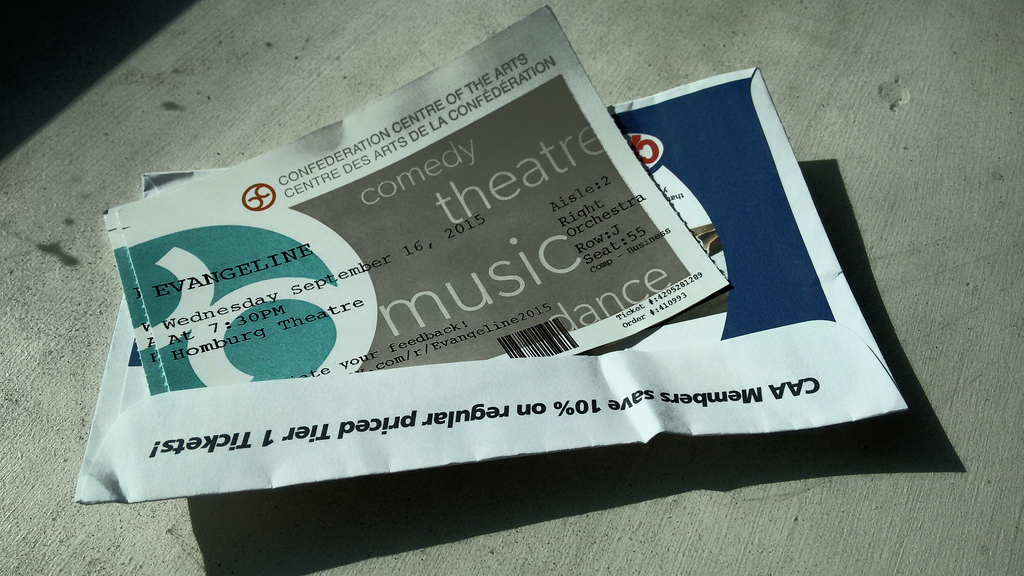
This has been a season of grand dérangement for us: in May we accidentally happened upon Grand Pré, Nova Scotia while on a weekend trip and learned, through Parks Canada’s excellent interpretation, the story of the Acadian expulsion. And, what’s more, got to experience the stunning landscape of the area and come to understand more about why it might once have been regarded as a paradise on earth.

Evangeline is a story that starts in Grand Pré and follows history through the expulsion, and eventual return, knitting everything together against the canvas of the thwarted love of Evangeline and Gabriel.
And it is epic.
Both as a story, and as a production.
The performances are epic. The music is epic. The costumes are epic.
The staging – whirling roundabouts and raising sails and wharfs that turn into huts that turn into mountains – is epic too.
But things didn’t start off well for me.
While I understand the necessity of speaking in distilled essences rather than finely drawn characters, the “here are the happy people of Acadie in their happy fiddle-playing idyll” was too much of a caricature for my taste, and didn’t sufficiently establish why Acadie was such a unique place with a long history. As so much of the drama of the tale depends on this, I wished that this part of the story had been stronger.
But things improved from that misstep, and by intermission, with the Acadians expelled and Evangeline and Gabriel pulled apart, I was left eagerly wondering what would happen next.
There were, in other words, no thoughts of escape during intermission.
The second act is where the real heart of Evangeline lies. In some ways it seems like an entirely different musical, and could almost exist as a self-contained piece.
The set is more inventively used, the music is more finely woven into the plot, the trekking back and forth across the eastern United States, which could have been plodding and dull, was, through imaginative staging, thrilling.
I unreservedly loved the second act, from opening until the rousing close.
And yet, it was musical theatre. What was happening to me?
What I realized, halfway through the first act, is that to enjoy musical theatre at all requires a suspension of the sense of its core absurdity, that being the notion that it’s a completely normal thing for song to break out at the drop of a hat.
It also helped to realize that what in a documentary about the grand dérangement could be communicated through narration must be telegraphed through other means in a musical, and so getting comfortable with the musical theatre tropes that are used for this, and relaxing into them, was a great help as well.
Which is also, perhaps, why my comfort with the second act was much greater than with the first: I was putting on a new set of clothes, and I needed to get used to them.
All epic, rousing, consuming, dramatic panorama aside, there’s another very good reason to love Evangeline, and that is because it’s an engaging musical about Canada, and a work of art that, perhaps for the first time in a generation, sees the Confederation Centre theatrically living up to its mandate to “celebrate the origins and evolution of Canada as a nation.”
Evangeline runs until October 10 at the Confederation Centre of the Arts (tickets); it also runs October 31 to November 22 at Edmonton’s Citadel Theatre (tickets).
You really should go and see it.
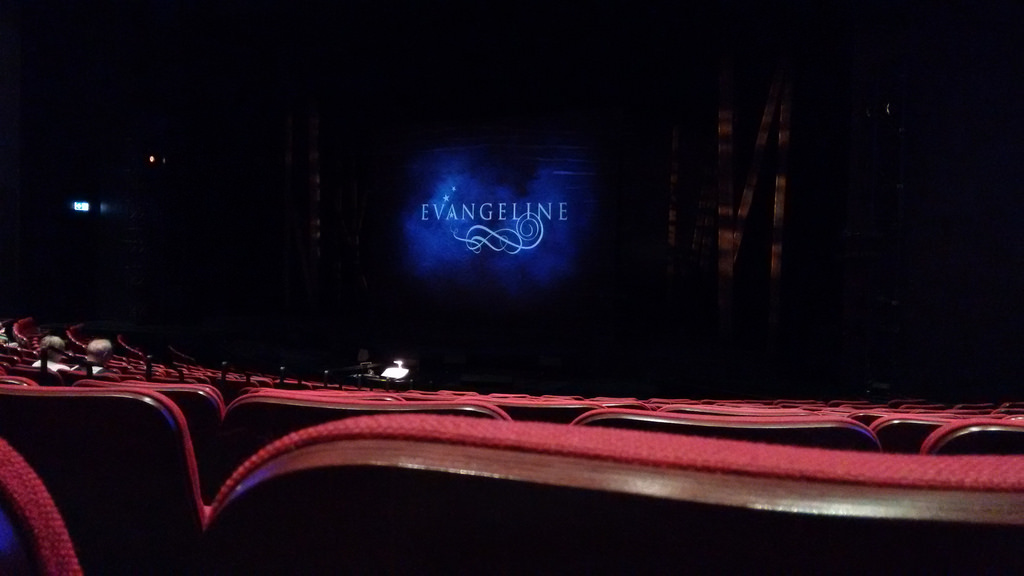
Oliver started grade 9 at Birchwood this week, his last year at intermediate school, and the 9th year we’ve been walking up Prince Street together every morning. As with last year, Ethan’s not quite ready to start school yet (soon; very soon!), but he still walks to school with us every morning.
Nine years, 180 days a year, 2 km there and back every morning: that’s 3,240 km of walking. Our morning walk is the most important time we spend together every single day; I wouldn’t trade those kilometers for anything.
Grade Nine, 2015
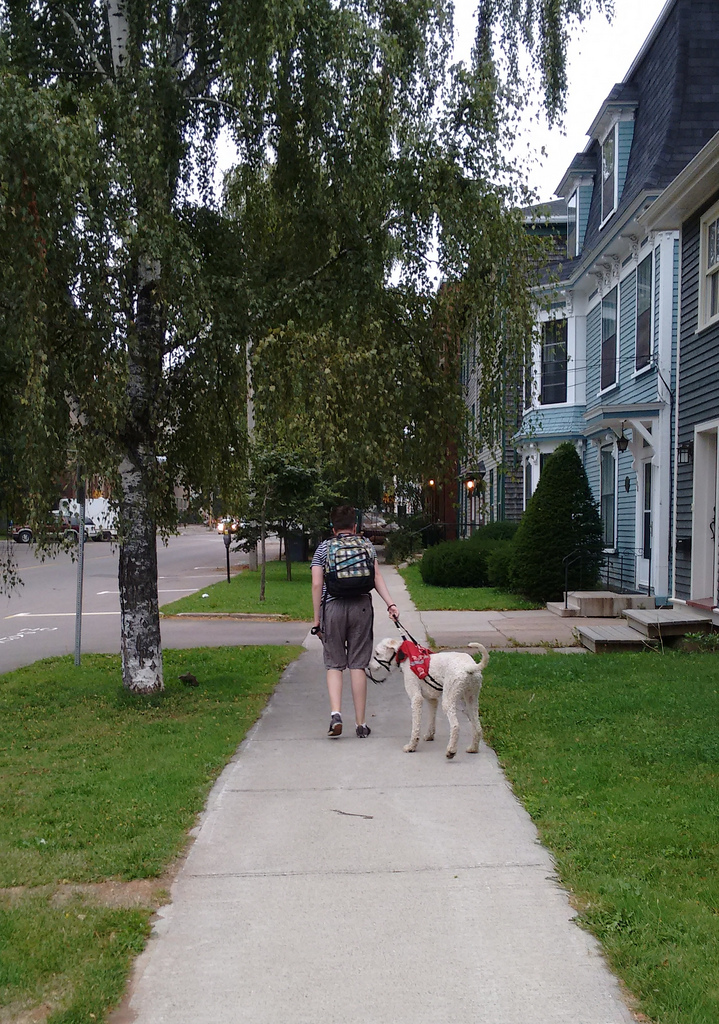
Grade Eight, 2014
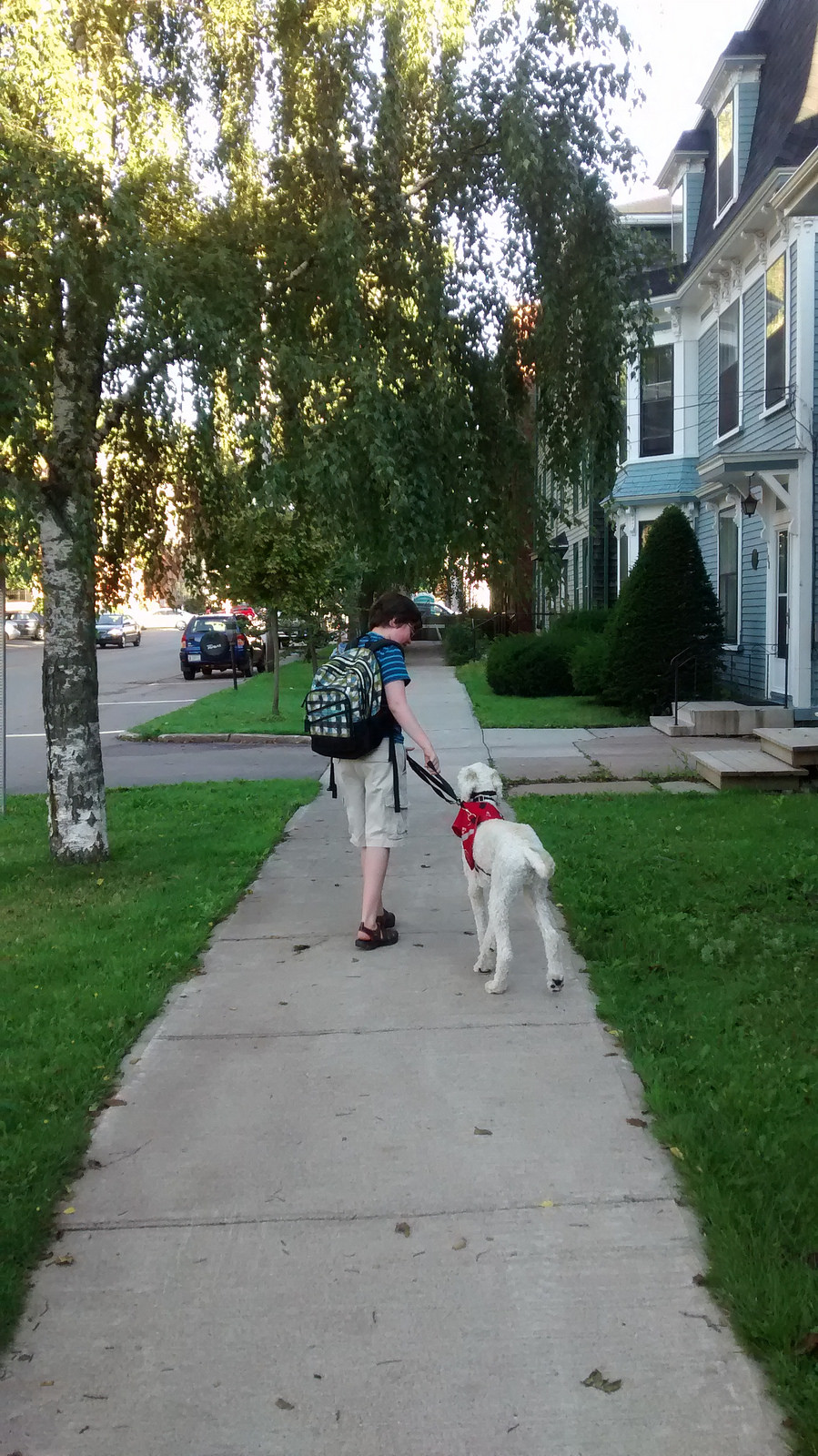
Grade Seven, 2013
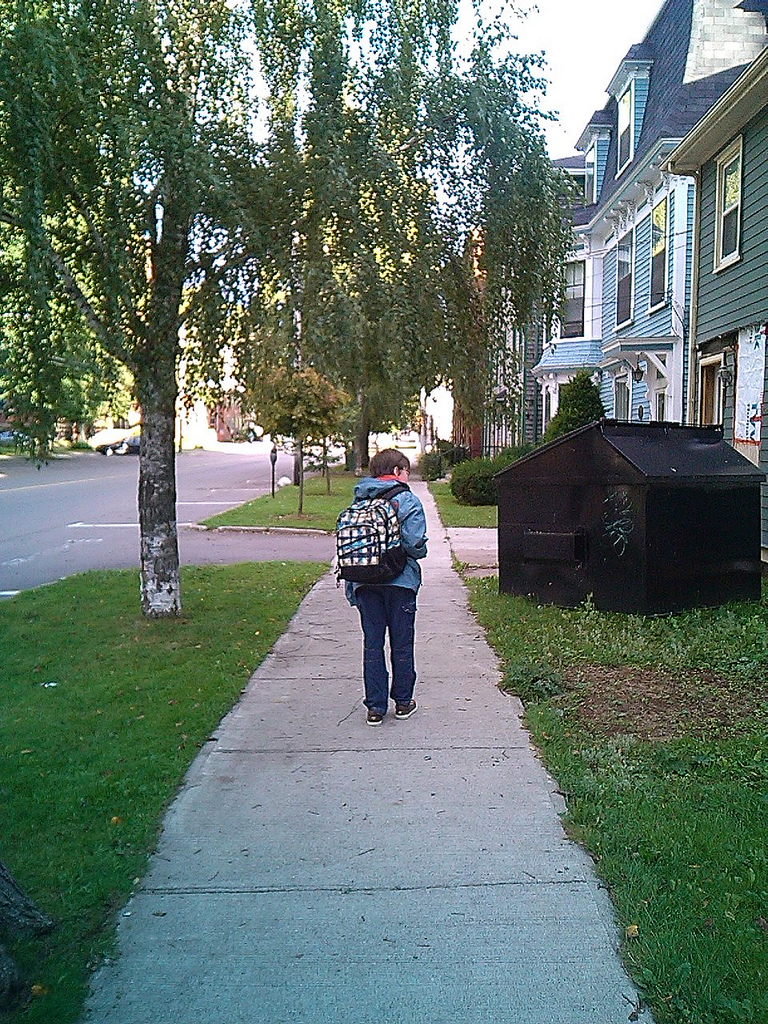
Grade Six, 2012
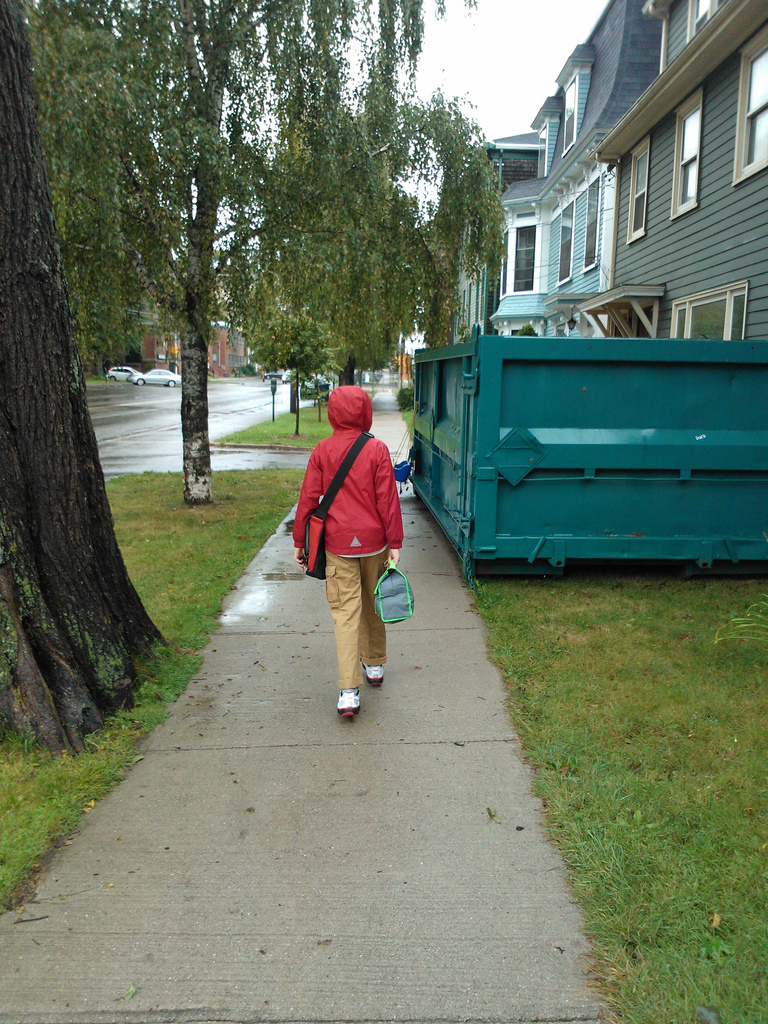
Grade Five, 2011
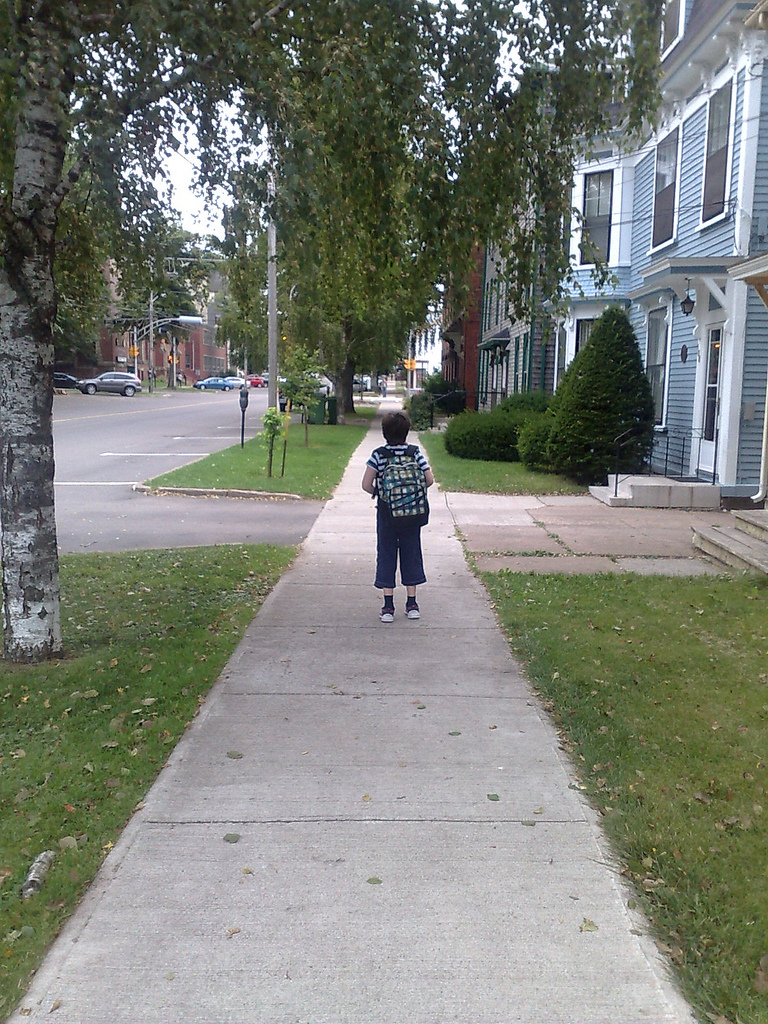
Grade One, 2007
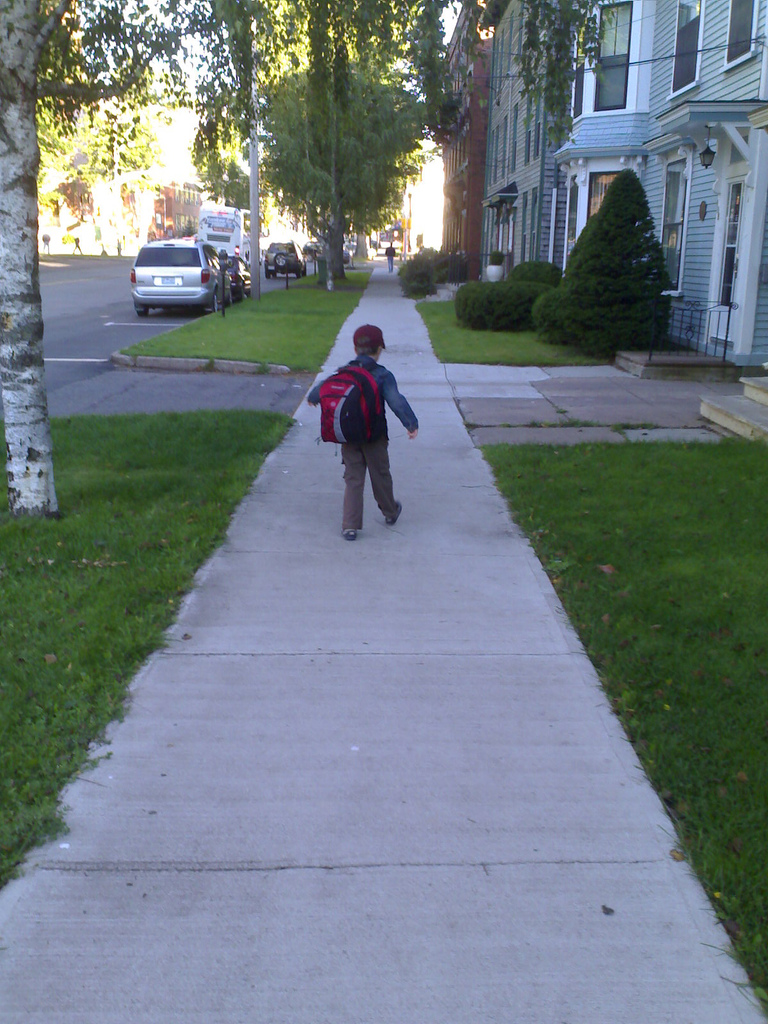
Let’s stipulate for the record, before I begin, that I’ve no great fondness for beer.
If basil went extinct, I would be gutted. If I could never drink another beer, well, meh.
There are some few small exceptions: a stark beer over Indian food with Olle in Malmö brings back good memories. And having a beer while watching a movie, sitting in a lounge chair, on a warm summer night, in the field at Freiluftkino Kreuzberg in Berlin is a singular pleasure.
But otherwise, meh. Especially when you start talking about chocolate afternotes, hoppiness, percentages of alcohol.
Which is why nobody is more surprised than I that I’ve become a fan of Upstreet Craft Brewing, the new Charlottetown brewery that is, as it happens, about 20 minutes walk up the street from our house.
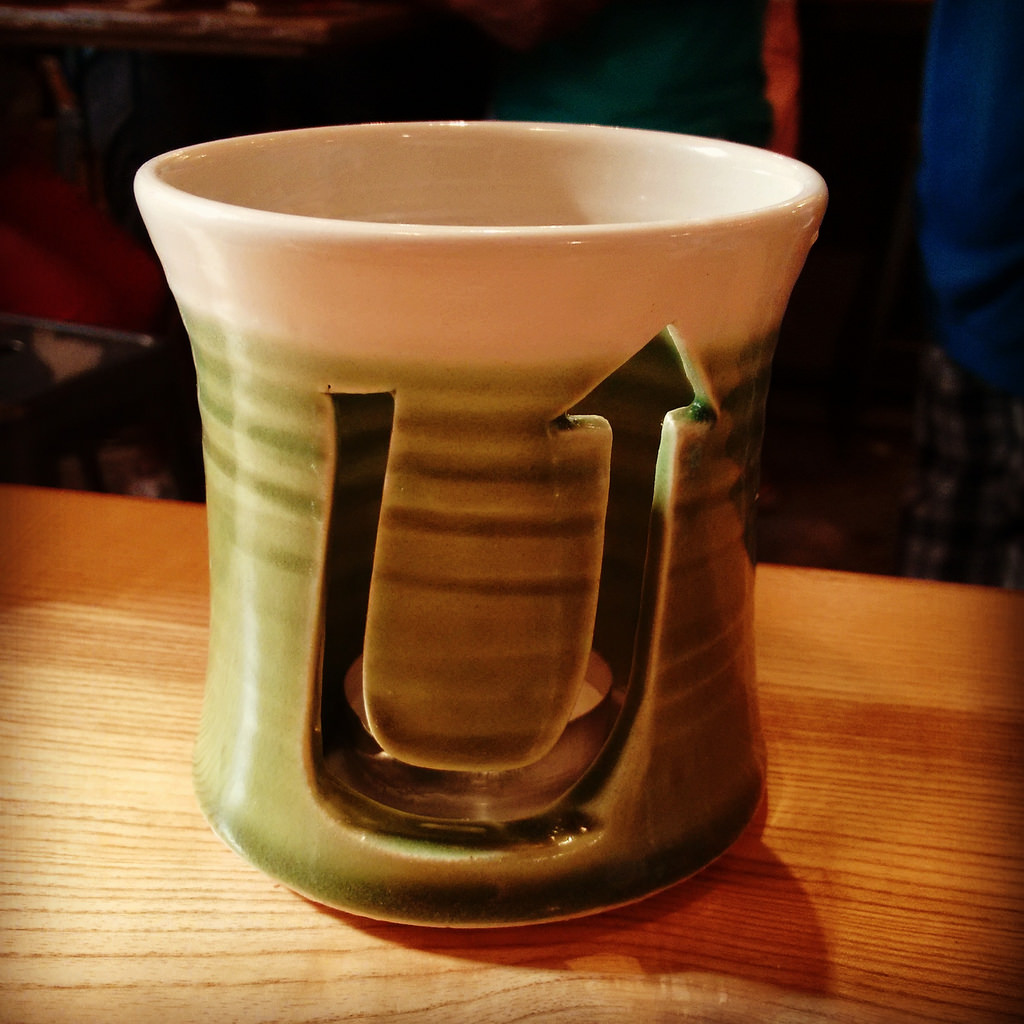
Although it’s been operating all summer long, yesterday was a sort of coming out party for Upstreet: it held a self-styled “block party” and invited the neighbourhood to stop in, have a beer, a haircut, some food, and a brewery tour, all while local musicians played on a stage in the parking lot. [[Catherine]] and [[Oliver]] and I spent the afternoon there; it was great fun.
The thing about Upstreet is that you need not have a taste for beer to enjoy its many other pleasures.
The free-play PacMan game. The wall of board games. The comfortable, solid wooden chairs. The spotlessly clean washrooms. The friendly staff. The invitation to get some food from the Thai Pad food truck in the parking lot and bring it inside to eat. The attention to the small details of typography and design that permeates.
In this light it’s interesting to contrast Upstreet with the longer-established PEI Brewing Company across town. PEI Brewing’s overarching style is more “Air Canada Maple Leaf Lounge for beer drinkers” whereas Upstreet’s is “neighbourhood pub, but with better aesthetics.” PEI Brewing is monumental; Upstreet is to scale.
All of which kind of makes me wish that I did have a greater fondness for beer, as I think I’d appreciate Upstreet all the more.
That said, I’ve certainly sampled their beer, and if I was to be captured by some beer-mandatory cargo cult, I wouldn’t mind that much if it was their beer of choice: it’s sprightly, inspiring, with definite overtones of morning dew and existential angst and a finish that evokes Mahler’s earlier works.
I made all that up.
Well, not the cargo cult part. But the part about the Mahler.
Upstreet is a welcome addition to our neighbourhood.
This may a task limited to me, but in case it’s not, here’s my goal:
- I have a collection of identical Amazon EC2 instances, all sharing the same “name” tag for identification; together they make up a Drupal server farm for a single site.
- I want to SSH to one of the instances – it doesn’t matter which one – so that I can execute some drush commands.
Heretofore my procedure has been cumbersome, involving logging in to the EC2 dashboard on the web, filtering my long list of instances by name, copying the external DNS name from one of the instance to the clipboard, and then pasting this, as part of an SSH command, to the terminal.
What I’ve done to streamline this, using Alfred and the AWS CLI, is this:
I set up an Alfred workflow, with the trigger keyword d7:

The workflow triggers a Terminal command:
ssh -t -p 22 -i 'keypair.pem' \ ec2-user@`aws ec2 describe-instances --profile clientname --filters "Name=tag:Name,Values=name-filter" \ --output text \ --query 'Reservations[*].Instances[*].PublicDnsName' | tail -n 1` \ "sudo su - apache"
Where, in my case, the components of the above are:
- keypair.pem is the name of the EC2 keypair I used with SSH to login to the instance
- ec2-user is the username I want to use to SSH to the instance
- clientname is an AWS CLI profile name that provides credentials
- name-filter is the name that the pool of instances I want to select from share in common
This command has the effect of using the AWS CLI to look up the external DNS names of all of the instances in this pool, grabbing the last one, and then SSHing to that instances and su’ing to the apache user.
So now I just trigger Alfred (Control + Space) and type d7 and press ENTER. Presto.

All of this presupposes that you’ve already set up the AWS CLI and ensured it’s working for you.
[[Oliver]] and I enjoyed another excellent iteration of Art in the Open, Charlottetown’s yearly end-of-summer outdoor site-specific art-infused celebration.
There were houses in trees, and surround-sound circles, and cocoon hammocks, and visualizations of magnetic vs. true north. There were crows, of course, and sewing machine art, and tin types, and buildings made out of recycled materials, and a Morse code booth.
Each was my favourite, in its own way.
My favourite experience of the evening, though, was sitting around a fire with Oliver and Ethan at the end of the long, perfect, summer day in Victoria Park, under a reddish full Moon.
There is notice in this week’s Royal Gazette that a person with middle name Nicole has changed it to Cole. Changing your name isn’t the most difficult thing to do, but it involves paperwork, and a $185 fee. I wonder what it is about the “Ni” that prompted this desire for change.
[[Oliver]] has two middle names, Duncan and Lowell.
Lowell he came by honestly.
Duncan he came by because of a misunderstanding.
Our friend Wendy had a baby boy a month before Oliver was born, and named him Dillon. But when Catherine heard the news, and the name, she mis-remembered this as Duncan and that’s what she told me his name was.
A few days later, when we learned the truth of the matter, and that Duncan was, so to speak, on the market again, we snapped it up as a middle name for Oliver.
A similar happenstance gave me to understand that our friends Bob and Yvonne had a baby girl they’d chosen to name Nardag.
I thought this an unusual choice, but who was I to call it into question. So I enthusiastically embraced it.
A few days later, when we learned the truth of the matter – that Nardag was, in fact, named Nadja – I had a hard time coping with the change, so enthusiastically had been my embrace.
To the point where I have continued to refer to Nadja as Nardag in the intervening years.
I did the same thing with roommates my brother Steve had back when he was a young lad living in Toronto.
His roommates had actual names, I’m sure; but to me they were always Morty and Hooper.
All of which is a roundabout way of saying that Nardag Nadja lands on Prince Edward Island today, a fully-formed adult, where she and a group of friends will occupy our back yard – or perhaps our living room, if it rains – for the night before heading out on a camping adventure in the Island’s hinterlands.
And, tomorrow, my brother Steve and his family land on the Island too – presumably without Morty or Hooper – for a fun-filled family vacation.
I will try very hard to keep their names straight.
Here is the front page of the New York Times from July 2, 1978, an auspicious day for the paper as it was the last day that the paper was composed from hot metal type using Linotype and Ludlow machines:
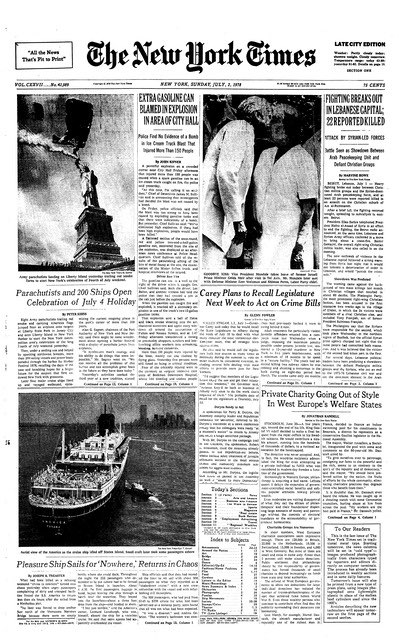
The story of that final day is well-told in the film Farewell – ETAOIN SHRDLU, which has been digitized by PrintingFilms.com and made available online.
The last act of the film, started at about 22:36 cover the mechanics of the post-hot-metal newspaper page composition process – a trade that I apprenticed in 1990 – using the paper of March 2, 1980 as an example.
Here’s a still from the film showing that edition’s front page on the paste up board:
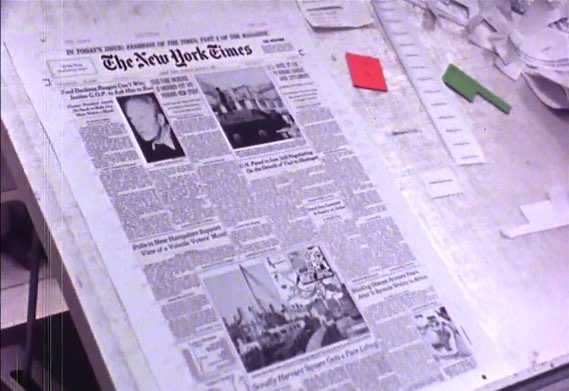
And here’s that same page, as it’s available today on the New York Times website:
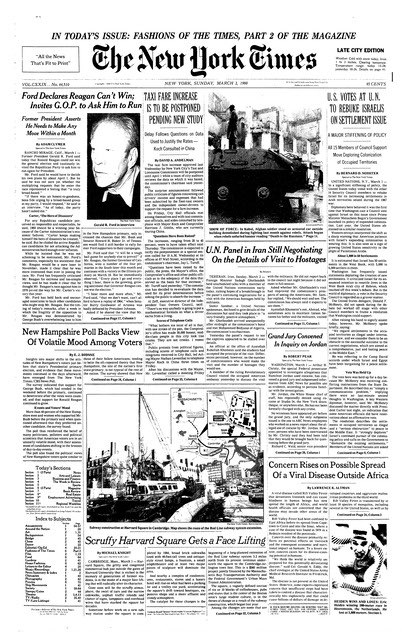
The phototypesetting process that the Times graduated to in 1978 is a process I once knew backward and forward: from 1991 to 1993 it was the trade I learned at the Peterborough Examiner.
What you see the printers in the film doing – keyboarding text, operating a phototypesetting machine, trimming the developed result, waxing and pasting up, with an editor at the shoulder – was the stuff of my everyday life for almost two years (an abbreviated apprenticeship, given historical practice, as I came to the position with some digital and keyboarding skills).
What’s interesting, looking back 37 years after the moved from hot type to cold, is that the reaction of the hardened old printers in the film to the transition is much the same reaction I had when, only a few months after I left my paper, there was a transition from phototypesetting and paste-up to completely digital pagination.
While this could be chalked up simply to nostalgia, I think there’s something to be said for the old ways: the interplay between page editor and printer that you see in the film a 9:40 is a relationship I know very well, and the film does a good job at describing and demonstrating how symbiotic a partnership it was:
The closest cooperation is needed, between the page editor and the makeup; together, they almost talk the type into the page form, coax it, cajole it, make it fit, as they work against the clock.
With the transition from hot type to cold type to digital, that “closest cooperation” has been diminished and then diminished again. It’s still there in some form, but the physical aspect of it – coax it, cajole it, make it fit – is gone now, and with it the “talking the type,” the patter between printer and editor that went with it. I’ve always held that those conversations were the heart of the newspaper.
Which is why I shed a tear or two watching Farewell ETAOIN SHRDLU: it’s a look at the wake for both a technology and an approach to newspapering, neither of which will ever return.
 I am
I am